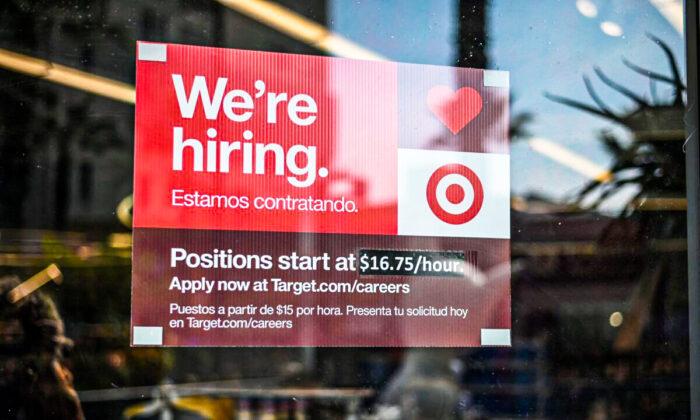Businesses are foreshadowed to increase pay by an average of 3.9 percent in 2022, marking the highest rate increase since 2008, and up 0.9 percent from the reported figure back in April.
The Conference Board, a non-profit business membership and research group organization, surveyed compensation executives across 230 organizations about two main components of compensation: salary increase budgets and salary structure movements.
They found that the increase in pay is mainly attributed to higher pay for new hires, with 46 percent of the respondents stating that this was the reason for the rise, suggesting that new employees are in a position to bargain for a higher salary amid a shortage in skilled workers.
Inflation, of which levels are currently at their highest in 30 years, was another reason cited for the rise, with 39 percent of respondents stating that this played a factor.
“Overall wage growth dramatically accelerated during the past 6–8 months. That increase is especially strong for workers under the age of 25 and for people who switched jobs in the past year. This suggests that much of the wage acceleration has been among workers who were recently hired,” said Gad Levanon, vice president for Labor Markets at the Conference Board.
“The faster wage growth of new hires has led to pay compression, which is when wage premiums for work experience shrinks. When more experienced workers feel that their pay advantage is no longer significant, they may seek new jobs in the tight labor market, which leads to high labor turnover of more experienced workers. Indeed, the quits rate is now the highest in recorded history. Employers faced with extensive departures of experienced workers will raise wages faster for current employees in order to maintain an effective workforce,” Levanon explained.
The wage hike comes as the nationwide labor shortage continues to intensify.
“The recent rise in COVID-19 cases and the emergence of the Omicron variant pose downside risks to employment and economic activity and increased uncertainty for inflation,” Powell told the Committee on Banking, Housing, and Urban Affairs and Senate lawmakers on Nov. 29. “Greater concerns about the virus could reduce people’s willingness to work in person, which would slow progress in the labor market and intensify supply-chain disruptions.”
The Conference Board on Wednesday said it also believes that severe labor shortages will likely continue through 2022.
“During that time, overall wage growth is likely to remain well above four percent. Wages for new hires, and workers in blue-collar and manual services jobs will grow faster than average,” the Board said.





